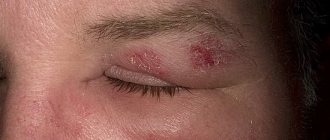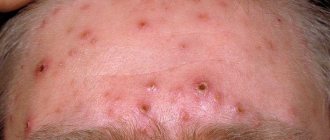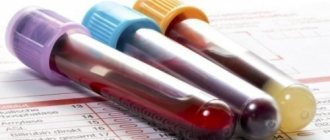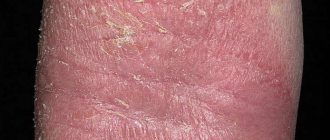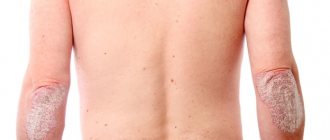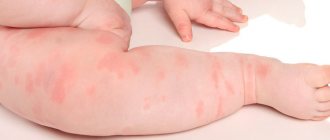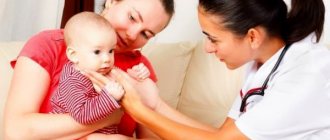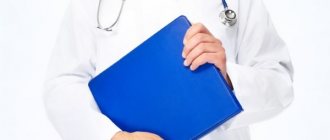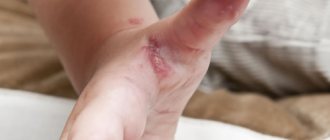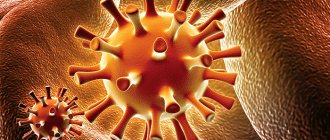Classification
The causative agent of shingles is the Herpes Zoster virus, which causes chickenpox. Having had chickenpox, the virus “falls asleep” in the body and then it can be reactivated, causing herpes zoster in a person. The main cause of the disease is considered to be weakened immunity.
In most cases, this type of lichen occurs in a typical form. However, other clinical forms also occur:
- The gangly cutaneous form is considered typical and the most common. In this case, the disease begins acutely and is accompanied by high fever, signs of intoxication and pain in the areas of future skin rashes. After 3-4 days, sometimes longer, spots appear, against which bubbles with liquid appear. The pain corresponds to the affected nerves and can intensify with the slightest touch and at night. After about a week, the pimples will dry out and crusts will form in their place, which will eventually fall off. Slight skin pigmentation may occur.
- Abortive. The abortive form of herpes zoster is characterized by the absence of a blistering rash and pain. However, the rash does not cause much discomfort and the disease itself lasts only a few days.
- The bullous or vesicular form is accompanied by rashes in the form of large blisters with jagged edges. Usually they are no larger than the size of a pea, but in this case they can be almost the size of a plum.
- Ocular. In the ocular form, the trigeminal ganglion is affected. Then the rash is located according to the branch of the trigeminal nerve on the face, mucous membrane of the nose and eyes.
- The auricular form of shingles is accompanied by rashes in and around the auricle, and sometimes in the external auditory canal. In addition to the rash, symptoms include dizziness and ear pain. In rare cases, there is a risk of facial paralysis and deafness.
- Gangrenous. This clinical form is most often found in weakened or elderly people with immunodeficiency, diabetes mellitus, stomach ulcers, etc. The form is considered the most severe and the disease is more difficult to treat. Characteristic are vesicles that do not heal for a long time. Due to deep damage to the patient’s skin, scars remain after recovery.
- Generalized. This form of lichen usually occurs in patients with immunodeficiency or those suffering from serious illnesses. In this case, after the appearance of gangly cutaneous lichen, the rash begins to spread throughout the body, as if with chickenpox. However, the worst thing is acne not only on the body, but also on the mucous membranes, which is extremely dangerous for the patient.
- The meningoencephalitic form of lichen is rarely diagnosed and has an extremely severe course. At the very beginning, a rash appears in the area of the intercostal nerves or in the cervical region. The next stage of the disease is the appearance of symptoms of meningoencephalitis, which is characterized by: impaired coordination of movements, hallucinations, paralysis, ataxia. The period from the onset of the rash to the appearance of symptoms of encephalopathy varies from two days to 3 weeks.
Symptoms of herpes zoster in adults
The symptoms of herpes zoster caused by Herpes Zoster cannot be ignored, since there is almost always an acute onset of the disease, a burning sensation in the affected areas and severe pain.
At the very beginning, the symptoms are similar to a cold or ARVI. There is general malaise and other symptoms that last for 2-4 days:
- headache;
- weakness;
- high body temperature, fever;
- disturbances in the gastrointestinal tract;
- in most cases, enlarged lymph nodes;
- pain and itching in areas of future rashes;
- in severe cases, urinary retention and other symptoms may occur.
When the temperature drops, the symptoms of intoxication weaken.
Stage of rash
After the prodromal period, the next stage of herpes zoster begins - the appearance of pink edematous spots with uneven borders and a diameter of no more than 5 mm, which within a few days form into erythematous papules and then turn into blisters.
Herpes zoster is characterized by rashes on one side of the body, usually located in the torso area: abdomen, chest and pelvis. In rare cases, they can affect other areas:
- hands;
- legs;
- back of the head;
- areas between the ribs;
- face – trigeminal nerve;
- buttocks;
- neck.
Since the virus accumulates in the nerve ganglia, skin manifestations are localized along the nerves. In case of damage to the facial part due to lichen on the face, areas according to the ternary or facial nerve are affected.
In general, the rash depends on the course of the disease:
- With classic herpes zoster, vesicles will appear a day later at the sites of the outbreaks. There will be a clear serous liquid inside them, after a short time the liquid will become cloudy.
- In the case of a mild form of lichen, there may be no pustules at all, only skin nodules will appear. With this form of rash, sometimes there are no rashes at all, only pain along the nerve is noted.
- When you have a severe form of lichen, the rash is similar to pimples during chickenpox - they appear in new areas, and their number becomes larger. Eventually the pimples cover the entire body. Blood can be seen inside the vesicles, and they themselves are black.
Approximately on the 7th day, no later than after a week and a half of the disease, the blisters dry out and crusts form in their place, which disappear on their own. The red color gradually loses its saturation. Instead of crusts, pigment spots may remain.
Since the symptoms are vague and directly depend on the form of lichen, they are easily confused with other diseases. In this regard, it is extremely important to consult a doctor in order to make a correct diagnosis in time.
Painful sensations with lichen
Due to the localization of the virus in nerve cells, the patient experiences severe pain. Herpes Zoster disrupts the functioning of cells, which causes the sensitivity of nerve endings to increase significantly.
Ringworm experiences pain even at the slightest touch to the skin. The sensation can be compared to the pain of a burn. Painful sensations tend to increase if water gets into the affected areas of the skin. Patients describe the pain as pulling, burning, boring and dull.
An unpleasant nuance of herpes zoster is that for a certain part of people the pain remains for some time after recovery. Due to viral damage to nerve tissue, it will take time to recover. In young people, the pain goes away in less than a month; in older people, it can last even more than a year.
Treatment options
It is very important to start treatment as soon as possible, preferably no later than on the third day. Mild forms can be treated at home. In order to prevent complications and reduce the likelihood of neuralgia, you should definitely consult a dermatologist who will prescribe the necessary procedures.
Traditional
The main goals of therapy (treatment process) will be the following:
- accelerating recovery by affecting the source of herpes;
- relieving or reducing pain;
- reducing the risk of various complications;
- prevention of suppuration of vesicles.
In order to localize (prevent the spread) of the disease, the doctor usually prescribes the following medications:
- antiviral;
- immunomodulators;
- painkillers;
- anti-inflammatory;
- antipruritic.
A group of antiviral drugs is used to block the herpes virus that causes this disease. Their action most often extends at the level of the DNA of the virus, preventing its synthesis or causing the DNA chain to break. Some drugs, such as Acyclovir, in addition to antiviral, also have an immunostimulating effect.
Be sure to read:
Urticaria in adults and children: causes, symptoms and treatment
As a rule, the following tablets or injections are prescribed for treatment, the course of treatment lasts on average 8-10 days, although it all depends on the severity of the disease:
- Acyclovir;
- Zovirax;
- Famciclovir or Famvir;
- Valaciclovir or Valtrex.
With herpes zoster, the herpes zoster virus is activated and multiplies, penetrating nerve cells. This can cause severe pain at the site of the rash.
For some, the pain persists for a long time, a condition called postherpetic neuralgia. Neuralgia is observed in 10-15% of patients, the vast majority of whom are elderly people over sixty.
In order to reduce pain shock, the following painkillers are prescribed:
- Analgin;
- Aspirin;
- Butadion;
- Baralgin;
- Ibuprofen;
- Indomethacin;
- Diclofenac;
- Paracetamol.
Some of these drugs also have anti-inflammatory and antipyretic effects. Or anti-inflammatory drugs are prescribed separately, such as, for example, acetylsalicylic acid.
Sometimes, to reduce particularly severe pain, novocaine blockades are prescribed, in which injections are made into the tissue surrounding the affected nerve.
Lubricating vesicular rashes with brilliant green or other antiseptics is prescribed locally.
In order to reduce itching, you can lubricate the area with menthol. For the same purpose, clothing is selected in such a way as to minimize friction when in contact with the body.
What absolutely should not be done during the course of the disease:
- take baths;
- steam the affected area in a bathhouse;
- wear tight clothing to prevent suppuration;
- take sunbathing, which contributes to the spread of rashes.
A little about the vaccine against the virus
Scientists have been developing a vaccine for a long time that would reliably prevent the development of the Varicella-zoster virus.
At the moment, there is only one vaccine for the prevention of shingles - Zostavax.
A study on elderly people aged 60 years or more showed the effectiveness of its use. The introduction of the vaccine reduced the risk of developing the disease by 51%. The vaccine creates artificial immunity that lasts for three to five years.
There are contraindications for the Zostavax vaccine:
- allergy to vaccine components;
- with elevated body temperature, as well as the presence of colds;
- HIV infections and AIDS;
- pregnancy.
Sciatica: treatment with folk remedies at home.
Chronic pharyngitis. Read about the causes and treatment of the disease in this article.
Learn more about how to boost immunity using folk remedies.
Folk remedies to help the patient
Traditional or non-traditional methods of treatment are now widespread. Herbal decoctions, infusions and lotions in most cases have a beneficial effect on the patient without causing side effects.
Be sure to read:
Treatment of mumps disease - symptoms in adults and children
However, when treating shingles you need to be extremely careful, since the disease progresses very individually.
Self-medication is unacceptable in the following cases:
- during pregnancy;
- if we are talking about treating a child of the first year of life;
- the patient's age is 50 years or more;
- a person with shingles has diabetes mellitus;
- presence of tumors and taking antitumor drugs;
- any existing chronic diseases.
Various herbal infusions improve well-being and heal the body as a whole. In addition, medicinal herbs are a valuable source of vitamins and microelements.
Burdock infusion
Grind the burdock roots with a pestle or coffee grinder. Take one tablespoon of raw material and pour a glass of water heated to 100 C. Simmer under the lid for half an hour. Take half a glass with each meal.
Ginger root infusion
Ginger roots are most often found on sale in raw form. In order to brew the infusion, it is not necessary to dry them, just chop them a little with a knife. For a glass of boiling water you need to take approximately two tablespoons of the root and pour a glass of water brought to a boil. Cool, strain and take half a glass at each meal.
To reduce pain in the area of the rash, it is recommended to apply medicinal lotions for 20-30 minutes. Or, if this is not possible, wipe the vesicles. After the procedure, be sure to dry the area with a napkin or towel.
Wormwood tincture
Sold in pharmacies, you can also make it yourself. For treatment, alcohol tincture of wormwood should be applied to the rash for 20 minutes. Then let it dry.
Rubbing with mint infusion
Pour a tablespoon of dry mint with half a glass of boiling water and let it brew under the lid for half an hour. Cool and wipe the sore area with a cotton swab from time to time.
How is herpes zoster treated?
In general, treatment for lichen depends on the specific case, the patient’s condition, predisposition to complications, and other things. Uncomplicated lichen can be treated at home on its own. In case of an atypical course or the first signs of complications, hospitalization will be required.
Theoretically, lichen in an adult can go away on its own. However, treatment will reduce the risk of developing any complications, and will also alleviate the patient’s condition and get rid of the rash as quickly as possible. This is especially true for pain that accompanies rashes and causes extreme inconvenience to the patient.
Therapy is mainly based on several types of medications:
- Antiviral drugs. Medicines against the virus are considered the most effective method of combating the main symptoms of lichen. The most effective are: Valaciclovir, Famcyclover and Acyclover. Within three days they will relieve pain, and can also reduce the duration of the disease and the possibility of developing neuralgia after recovery. Typically, the course of treatment lasts 10 days; in the first three days, improvements should already be noticeable.
- Pain pills. Since pain in lichen is one of the main and painful symptoms, painkillers will significantly help in treatment and also improve the psychological state of the patient. You can relieve pain with the following drugs: Ibuprofen, Ketoprofen and others.
- Antihistamines. Allergy pills will help you cope with itching and burning: Suprastin, Tavegil and others.
- Anticonvulsants. Typically, anticonvulsants are used in epilepsy, but they will also be useful in the presence of a herpes virus. For example, Gabapentin or Pregabalin are suitable.
- Antibiotics. This type of medication is recommended in cases where the patient develops a bacterial infection or pyoderma. Available in tablet and ointment form.
- Sedatives will help normalize sleep and generally alleviate the patient’s condition.
- Local agents. Fucarcin and diamond ointment can be prescribed to treat affected areas of the skin. They have an antiseptic and drying effect. In cases of prolonged wound healing, Solcoseryl ointment is used. Before smearing pustules that appear as a result of herpes zoster, it is better to check the drug with a doctor. Some ointments, due to their composition, can aggravate the situation.
It is important to note that it is highly not recommended to take any medications from the list above on your own and this may even worsen the condition of the patient with lichen. Any type of drug should be prescribed exclusively by a doctor.
Many patients are concerned about whether it is possible to wash themselves if they have shingles, since water is known to sometimes increase the pain. Taking a shower, let alone a bath, is not recommended during the acute period, otherwise there will be a risk of spreading the infection. You can wash partially, using gentle detergents, trying to avoid affected areas of the skin.
When the lichen subsides a little, you can take a quick shower or bath, it is important that the water is not hotter than 37 degrees. A bath is recommended no more than twice a week and, preferably, using an infusion of chamomile, calendula or celandine. The main thing is to be careful and not to damage the vesicles or crusts that appear in their place.
It is extremely important that the patient has a separate towel, washcloth and other supplies. This is associated with a huge risk of infection due to contact with the wounds of the patient.
In order to reduce discomfort, you should also take care of the patient’s clothing - it should be loose and not tight to the skin, especially in the affected areas. It is also important to regularly change clothes and bedding and iron them after washing.
As for older people, therapy is carried out taking into account the presence of weak immune defenses in patients and any diseases that complicate the recovery process, such as diabetes.
All patients benefit from taking vitamins, especially group B. They can help heal wounds and renew the skin. Doctors recommend sticking to a certain diet, adding easily digestible foods high in nutrients to your diet.
How the disease is transmitted
Unlike chickenpox, airborne infection is not enough for herpes; infection occurs as a result of direct contact - for example, after touching areas of the skin affected by the virus.
In the meantime, it is dangerous, doctors give the following recommendations: do not use (or touch) shared towels, washcloths, items of linen and clothing, and dishes.
In public places, caution also does not hurt, since the virus can be on a door handle if it has been touched by an infected person, on handrails on a bus, or on baskets and trolleys in a supermarket.
A sauna and sand on the beach may pose a potential threat. In this situation, hygiene is our main defender.
On forums on the Internet where the topic of herpes zoster is discussed, the following topic is often raised: does this disease occur in dogs and cats, and is it possible to catch the infection from them?
Experts reassure: the transmission routes of this type of herpes have nothing to do with our smaller brothers, they never get chickenpox themselves, and therefore cannot infect a person.
If you are interested in what cytomegalovirus infection is in children, we recommend reading our article.
Instructions for using Lokoid ointment are discussed in detail in this material.
Atypical course
In cases of atypical forms of lichen, the course of the disease is different and, in many cases, complications may develop. In the best case, there are no rashes at all, although the pain remains. There are also particularly large bubbles that can merge, forming elements with jagged edges.
In more complex cases, with severe forms of lichen, a rash with black blisters is observed, due to the presence of blood inside. For this reason, wounds and scars will appear in their place after recovery.
Among the atypical forms of lichen, it is worth noting the generalized one - vesicles appear not only on the patient’s body, but also on the mucous membranes, which occurs mainly in people with immunodeficiency.
The rarest variant of the atypical course of the disease is the meningoencephalitic form. In this case, symptoms of meningoencephalitis are noted, which is extremely dangerous for the patient. Symptoms may appear as early as two days after the rash appears.
Atypical forms are dangerous, first of all, due to vague symptoms. In this regard, it can be difficult to make a diagnosis on time and quickly begin treatment for herpes zoster on the body.
Course of the disease
The duration of the disease in normal cases does not exceed 3-4 weeks. In rare cases, the course of the disease will be less than 10 days or more than a month. The incubation period is unlimited, since after chickenpox you can get sick again decades later. In general, with typical lichen, there are three periods.
The initial stage lasts up to 5 days, then symptoms appear, like a cold or ARVI. At this stage, treatment will not be effective. It is also difficult to accurately diagnose shingles before the rash occurs, since the symptoms are similar to other diseases.
Even the pain that occurs at the sites of future rashes is often similar to the pain associated with cholecystitis, intestinal colic, angina pectoris and other diseases. Their only difference that allows us to suspect lichen is an increase in discomfort at night, at the slightest touch, as well as loss of sensitivity due to the introduction of the virus into nerve cells.
The next stage is obvious external signs of lichen, manifested by rashes. First, redness and swelling will appear along the nerve trunk, then papules will appear in their place - so-called nodules above the surface of the skin. In a day or two they will turn into blisters or pustules.
Over the course of 3-5 days, their number increases and larger and larger areas of the skin are affected. After this time, the appearance of pimples stops, the vesicles dry out and crusts form. This usually takes no more than 10 days.
Instead of crusts, small ulcers may appear, in place of which pink spots will soon be visible. In general, this period should last no more than a month. Sometimes patients are left with slight pigmentation.
If the rash does not stop within a week and new elements appear, this indicates a clear immunodeficiency in the patient. Other deviations or forms are also considered an atypical course of lichen. There are also complications, such as the development of a staphylococcal infection in the contents of the blisters, which makes recovery take longer.
Complications
One of the main questions related to the disease: how dangerous is shingles? In case of infection, complications are rare, but they do occur. Most often, patients experience pigmentation or scarring. In addition, among the serious consequences it is worth noting:
- suppuration of blisters and infection;
- damage to the eye or ear, if we are talking about damage to these areas due to lichen;
- decreased sensitivity and motor function in the arms and legs;
- paralysis of the facial nerve or distortion of the face on one side;
- meningoencephalitis - extremely rarely occurs in the most severe form of lichen;
- myelitis, when the gray and white matter of the spinal cord is affected;
- problems with urination and bowel movements;
- miscarriage and pathologies in pregnant women.
The most common consequence of lichen is postherpetic itching and pain, which remain even after all the symptoms of the disease have disappeared. Sometimes they are noted at the same time. Such consequences occur mainly in 10-20% of patients and can last several days, months or even more than a year.
Often, in young people, the consequences of deprivation do not last long; in older people, they can be prolonged. Patients report several types of postherpetic pain:
- at the slightest touch to the skin - this is the most common type of pain;
- constant dull, pressing and burning pain;
- a sharp stabbing sensation that appears suddenly.
Due to the possible consequences, it is strongly recommended not to self-medicate at home and carry out treatment exclusively under the supervision of the attending physician.
Which doctor should you contact?
Since the symptoms of the disease can be vague and are often similar to other diseases at the very beginning, not everyone knows which doctor diagnoses and treats shingles. At the first rash, you should consult a dermatologist. Further, depending on the course, an examination by a neurologist may be required.
In cases of prolonged manifestation of lichen or severe forms, you should definitely visit an infectious disease specialist and immunologist.
Under no circumstances should you ignore going to the hospital if the following group of people have symptoms:
- in a baby, pregnant woman or elderly person;
- taking medications that negatively affect the functioning of the immune system;
- patients after internal organ transplantation taking medications to reduce the risk of organ rejection;
- patients whose symptoms developed against the background of an existing chronic infection.
It is important for patients who have already been diagnosed with the disease to seek emergency medical care if:
- severe headaches;
- nausea and vomiting;
- confusion;
- muscle tension at the back of the head;
- loss of consciousness;
- presence of dizziness;
- ear pain;
- the appearance of seizures;
- fever;
- hearing loss, loss of taste and smell.
At the first symptoms of herpes zoster, it is important to consult a doctor; treatment of adults and children must be carried out under his supervision.
Causes of herpes zoster
The causes of shingles are always associated with instability of the immune system. Relapses occur for many reasons, but they will always indicate the inability of the immune system to suppress the virus in the body. When a person has had herpes zoster, the human body begins permanent immune suppression. That is, he will suppress the virus throughout his life until the protective mechanisms fail.
In this regard, when herpes zoster is considered, its causes of recurrence must be associated with a suppressed immune system. Let's look at the reasons that can lead to a failure of the immune system and activation of the zoster virus:
- radiotherapy and radiotherapy;
- cancer diseases and oncological formations;
- undergone surgical operations;
- HIV or AIDS;
- organ transplantation;
- taking antibiotics and medications that kill the immune system;
- depression and stress;
- hypothermia or overheating.
In addition to the obvious reasons for suppression of the immune system for most people, such as AIDS, taking antibiotics, or organ transplantation, immunity can weaken even under stressful situations. Let's say that many people make a mistake when hardening when they take a contrast shower and choose a wide temperature range. A sharp change in body temperature produces a stress hormone, which affects the functioning of the immune system. In order for immune suppression to work, it is necessary to exclude all methods of life activity aimed at testing the strength of the immune system.
Doctors have not found the reasons that cause shingles in humans other than a decrease in the protective functions of the body. Therefore, with herpes zoster there is only one cause, and there are many ways to cause it.
When hardening, especially systemically, you should not reduce the water temperature below 22 degrees and increase it above 39 degrees. If you stick to this range, your immunity will strengthen, but if you make a stronger contrast, your immunity will be gradually suppressed.
Bottom line
Due to the Herpes Zoster virus, people develop not only the well-known chickenpox, but also lichen. The disease brings obvious discomfort and severe pain that occurs due to damage to nerve cells. In this case, the rashes are located along the nerve and most often on one side of the body.
Since the most important reason why the virus is activated is weak immunity, as a preventative measure it is important to monitor your health and receive timely treatment. Treatment depends on how quickly the symptoms of lichen pass.
You should not ignore the disease and prescribe medications yourself; it is important to be treated exclusively under the supervision of a doctor, otherwise there is a risk of developing the disease, which will ultimately lead to complications.
How to treat women during pregnancy and breastfeeding
In pregnant women, shingles is very rare, unlike simple herpes, which quite often disturbs the peace of expectant mothers.
Why does herpes zoster appear? As a rule, due to weakened immunity - with HIV and other diseases associated with immunodeficiency.
To overcome the virus, it is important to correctly recognize it; for this, various tests are carried out (including immunoglobulin), and the PCR method is used to identify the causative agent of the infection using samples from vesicular fluid, saliva, and urine.
If the disease is left without proper treatment, there is a danger for the unborn child - a negative effect on the fetus can cause chromosomal abnormalities in newborns.
The doctor selects treatment for each patient individually - the drug itself, its dose, and duration of use are selected taking into account the severity of the problem and the characteristics of the female body.
The same principles are followed when it comes to the health of a nursing mother.
About the features of herpes zoster in children and pregnant women in the following video:
